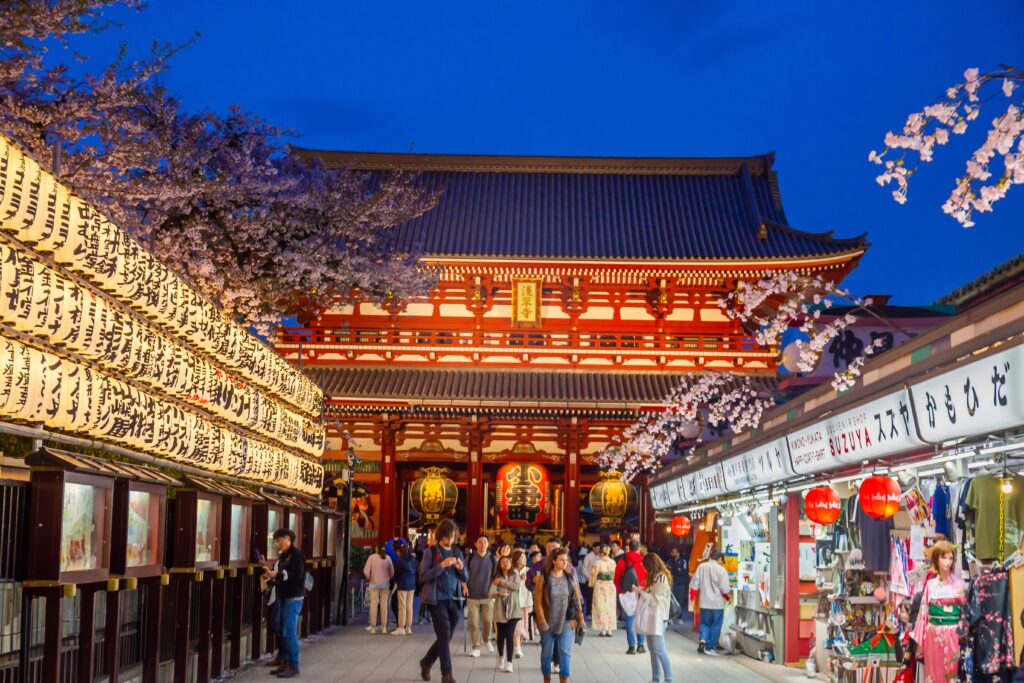Japan Office Setup, Virtual Presence, and Local Representation: What’s Best for You?

Japan Office Setup, Virtual Presence, and Local Representation: What’s Best for You? Japan rewards precision and patience. If you’re entering the Japanese market, your first structural decision; how you show up physically (or virtually), sets the tempo for everything that follows: bank accounts, visas, credibility with customers, and your timeline to revenue. This guide gives you the clear-eyed, nuts-and-bolts view of Japan office setup options, their trade-offs, and how to choose the best path for your stage. The Four Main Paths to “Being There” 1) Virtual Presence (Virtual Office in Japan) What it is: A professional registered address and mail handling, sometimes call answering and meeting room access—without leasing physical space full-time. Best for: Market exploration and early entering-the-Japanese-market programs Low overhead; quick credibility boost on cards and websites Founders who travel in/out and don’t need permanent desks What you can do: Use a Japanese address (good optics) Receive mail and packages; book meeting rooms ad-hoc Pair with local representation in Japan for in-person meetings Limitations: Some banks/government processes prefer or require a real office lease Won’t replace an entity if you need to hire employees, issue invoices locally, or sign regulated contracts Who chooses this: Companies validating demand, building pipelines, and preparing for Japan company registration with virtual address as a stopgap. 2) Representative Office (調査事務所) What it is: A non-revenue presence for market research, liaison, and sourcing. Not a legal entity that conducts business. Best for: Running research, supplier vetting, and establishing-a-business-in-Japan groundwork Hosting meetings, collecting information, coordinating with HQ What you can’t do: No sales, no invoicing, no revenue-generating activities Typically can’t sign sales contracts on behalf of HQ Pros: Low compliance risk and operating cost Good for extended due diligence before you commit Cons: Limited commercial activity; you’ll need to convert to a branch or subsidiary to transact Important nuance: The difference between representative office and subsidiary in Japan is night and day: a rep office is a listening post; a subsidiary is a selling body. 3) Branch Office (支店) What it is: Japan location of your foreign company. You transact in Japan, but legally it’s still the foreign entity. Best for: Faster route to local sales under the foreign company’s umbrella Businesses with clear HQ control and near-term revenue Pros: Quicker to establish than a subsidiary in many cases Can invoice locally; more credibility than a rep office Cons: Some customers prefer contracting with a Japanese incorporated entity (credibility, risk, procurement policies) Certain licenses and banking relationships can be harder under a branch Liability and taxation can be less clean than with a subsidiary Choose this if: You want to sell now, maintain centralized governance, and accept that some large clients or sectors may still insist on a local company. 4) Subsidiary (GK or KK) What it is: A Japanese legal entity you own—either GK (合同会社) similar to an LLC, or KK (株式会社) akin to a joint-stock corporation. Best for: Long-term Japan growth, hiring, enterprise sales, regulated sectors Clean contracting, local procurement registration, brand credibility Pros: Highest market acceptance and trust Clear liability ring-fencing and Japanese legal entity options for governance Easier access to some licenses, government programs, and enterprise procurement Cons: Higher setup effort and running costs vs. branch or rep office Requires ongoing corporate governance and filings GK vs KK in one breath: GK = faster, simpler, cost-efficient; great for SMEs and startups. KK = traditional, highly credible, better for fundraising or signaling scale. Comparison at a Glance Aspect Virtual Office Services Representative Office Branch Office Subsidiary (GK / KK) Address/Presence ✔ Address; meeting rooms ad-hoc ✔ Office allowed ✔ Full presence ✔ Full presence Can Sell/Invoice ✖ ✖ ✔ ✔ Bank Account Sometimes difficult with virtual-only Possible hurdles ✔ More feasible ✔ Standard Hiring Staff ✖ (without entity) Limited/indirect ✔ (via branch) ✔ Which One Fits Your Stage? A Simple Decision Framework Are you validating product–market fit? → Virtual office in Japan + local meeting support OR Representative Office. Do you already have interested Japanese buyers? → Branch Office if you want speed and central control. Do you target enterprise, hiring, or regulated sectors? → Subsidiary (GK/KK) for credibility, licensing, and procurement ease. Unsure? → Start virtual, build pipeline, then convert to GK; upgrade to KK when perception/fundraising demands it. Local Representation in Japan: The Hidden Multiplier Regardless of the structure, local representation in Japan changes outcomes. Introductions beat cold outreach, bilingual precision matters, and on-the-ground admin accelerates everything. Even with a virtual presence, appoint a local representative who can host meetings, handle documents, and keep the process moving. Japan Company Registration with Virtual Address: Can You Do It? Sometimes—especially for a GK. However, banks and certain permits often expect a real office lease. A practical approach is to incorporate with virtual office services, then add a modest physical office to smooth banking and hiring when you’re ready. Representative Office vs Subsidiary in Japan (The Real-World Difference) Representative Office: research/liaison, no revenue, lightweight compliance—good for 6–18 months of groundwork. Subsidiary (GK/KK): full operations—contract, invoice, hire, and scale. Stronger credibility with partners, banks, and regulators. Banking, Seals, and Paper: What Still Matters – Bank accounts: expect interviews and documentation; Japanese address and local presence help. – Seals (inkan/hanko) & e-seals: still relevant; increasingly digital, but don’t assume. – Bilingual documentation: keep JP/EN versions of bylaws, contracts, policies. Precision = respect. Hiring and Visas (Quick Note) If leadership will manage in Japan, explore appropriate visas and office requirements. If hiring locally, prepare for social insurance, labor rules, and payroll compliance. Cost & Timeline Reality Virtual office: fastest setup; lowest cost. Representative Office: low cost, quick. Branch: moderate setup; faster to transact than a subsidiary. Subsidiary (GK/KK): weeks, not days—but most future-proof. Governance & Risk You Shouldn’t Ignore – Data & security: align with Japanese privacy and sector standards. – Sector licensing: food, med-tech, fintech, construction, import/export—plan early. – Contracts: bilingual templates governed by Japanese law where appropriate. – Tax posture: branch vs subsidiary has different implications; align cross-border tax advisors. Example Playbooks (Choose
Starting a Business in Japan: Your Definitive Guide

Starting a Business in Japan: Your Definitive Guide If you’re considering starting a business in Japan, you’re making a wise choice. Japan has a stable economy, strong legal protections, excellent infrastructure, and a reputation for quality. But it’s also a market where regulation, culture, and procedure matter. Getting it right from the beginning saves time, money, and headaches. Below is a detailed, step-by-step roadmap for business registration in Japan: how to start, what “company structure” works best, what you’ll pay, and how corporate tax and foreign investment regulations come into play. Types of Company Structure in Japan Before you register, decide which legal form your business will take. The structure determines liability, tax treatment, management requirements, and setup complexity. Here are the main ones: Structure Japanese Term Key Traits Kabushiki Kaisha (KK) 株式会社 The traditional “joint-stock company” — similar to a corporation. It allows issuing shares, high credibility, ideal for raising investment. Requires more formal process (articles, notarization, etc.). Gōdō Kaisha (GK) 合同会社 Similar to a limited liability company (LLC). Easier to set up, less formal, fewer ceremonial requirements. Often preferred by smaller businesses or startups. Branch Office / Representative Office 支店 (Branch) / 駐在員事務所 If you’re an overseas company establishing a presence without creating a separate entity. A branch office can carry out business (but may be taxed differently); a representative office cannot engage in profit-making activities. In most cases for foreign SMEs planning full operations, issuing contracts, hiring staff, etc., setting up a KK or GK is preferred over merely using a branch or representative office. Foreign Investment Regulations & Visa Requirements Foreigners can own 100% of most types of companies in Japan. There are, however, some regulatory and visa-related requirements to keep in mind. Foreign Investment Reporting & Screening: Japan has rules under the Foreign Exchange and Foreign Trade Act. In certain sectors (especially those sensitive for national security, infrastructure, etc.), foreign investment thresholds may trigger screening. Business Manager Visa: If you or someone overseas will run the business in Japan, the Business Manager Visa (or equivalent) is often required. Outcomes depend on paid-in capital, a viable business plan, having an office, sometimes employing staff. This means while technically you can register a company with very little capital, if you want to live and work in Japan on such a visa, your capital and setup must meet stricter thresholds. Timeline: Step-By-Step Company Registration in Japan Here’s what to expect when you proceed from scratch. If you follow this sequence properly, the company registration timeline is usually 2-4 weeks, though complications (visa, real estate, licensing) can extend it. Step What You Do Who’s Involved / Documents Needed Step 1: Decide on structure & name Choose KK or GK (or branch). Pick company name (in Japanese and/or English), define purpose, head office location. Founders / shareholders. You may need consulting or legal support. Step 2: Prepare Articles of Incorporation (定款, Teikan) This includes business objectives, address, capital amount, shareholder & director info, share allocations. If KK, these often require notarization. GK is simpler. Judicial scrivener or notary public. Documents largely in Japanese. Step 3: Create your company seal (Inkan or Hanko) A legally required corporate stamp, plus seal registration. Many documents in Japan require corporate seal. Paid seal maker + legal affairs bureau registration. Step 4: Deposit initial capital You open a bank account, deposit the capital under the name of the representative. Even if legal minimum is very low, visa rules may set higher requirements. Step 5: Submit registration to Legal Affairs Bureau (Homukyoku) Include notarized Articles (for KK), proof of capital deposit, seal registration form, director appointment documents, address proof, etc. Legal Affairs Bureau of the prefecture where your head office is located. Step 6: Register for taxes / social insurance Once your company is legally registered, you must notify the local tax office about corporate income tax, consumption tax (if revenue threshold exceeded), payroll tax, and register with social insurance if hiring employees. Step 7: Open corporate bank account With your registration certificate, seal certificate, etc. Some banks require additional background details, business plan, or proof of visa status. Bank of your choice (domestic or branch of foreign bank). Step 8: Obtain required licenses / permits Depending on your industry (food & beverage, pharmaceuticals, finance, construction, import/export), you may need special licenses. Start early. Local regulatory bodies, ministries relevant to your industry. Registration Costs and Minimum Capital Understanding costs is crucial. There are two kinds: legal/administrative fees and ongoing costs for setup, visa, and operations. Item Typical Cost / Amount Registration fees (Legal Affairs Bureau) KK: approx ¥150,000 minimum, or 0.7% of capital (whichever is higher). GK: approx ¥60,000 minimum. Notarization (KK only) Usually around ¥50,000 for Articles of Incorporation notarization. GK doesn’t require this. Seal (Inkan/Hanko) costs Machine-carved seals might cost ¥5,000-¥20,000, depending on style and quality. Minimum capital Legally, you can start with very low capital (even ¥1), but in practice, especially for visa/business purposes, ¥5,000,000 is a benchmark. Additional setup costs Office rent, professional service fees (legal, accounting, translation), visa application fees, etc. In Tokyo, securing office space can be costly. Corporate Taxation in Japan Knowing how Japan taxes companies is essential when doing financial planning. The actual rates depend on your company’s capital, taxable income, location, and whether you are domestic or foreign-owned. Standard corporate tax rate: ~ 23.2% for companies with taxable income exceeding ¥8 million. Reduced rate for SMEs on income up to ~¥8 million: around 15%. Local taxes: Inhabitants tax, enterprise tax, special local taxes. These can push your effective combined rate into the 30-35% range depending on size, capital, and location (Tokyo tends to be higher). Tax on foreign companies: If a foreign company has a “permanent establishment” (PE) in Japan, it generally pays corporate tax only on Japan-source income attributable to that PE. If it registers a subsidiary in Japan, that entity is taxed similarly to domestic corporations. Register a Branch vs a Subsidiary If you’re a foreign business, one big decision is whether
From Pop-Up to Permanent: How Foreign Brands Use Temporary Retail to Test Japan’s Market

From Pop-Up to Permanent: How Foreign Brands Use Temporary Retail to Test Japan’s Market Pop-up retail has become a strategic tool for foreign brands entering Japan. These temporary activations allow companies to test demand, gather feedback, and build brand awareness before committing to full-scale entry. Consumer Appeal Japanese consumers are drawn to novelty and exclusivity. Pop-ups offer a sense of urgency and discovery, especially when tied to seasonal themes or limited-edition products. Locations in Tokyo’s Shibuya, Ginza, and Harajuku attract trend-conscious shoppers. Design Considerations Design is critical. Pop-up spaces should reflect Japanese aesthetics—clean, harmonious, and immersive. Incorporating cultural elements like tatami mats, calligraphy, or seasonal motifs enhances appeal. Staff should be trained in omotenashi to deliver exceptional service. Data Collection Data collection is a key benefit. Brands can use QR codes, surveys, and social media engagement to gather insights on preferences, pricing, and messaging. This informs future product development and marketing strategies. Successful Examples Successful examples include Glossier’s Tokyo pop-up, which sold out daily and generated buzz across Instagram. Nike’s Shibuya activation featured local artists and exclusive merchandise, building cultural relevance and loyalty. PR and Collaboration Opportunities Pop-ups also serve as PR opportunities. Media coverage, influencer visits, and user-generated content amplify reach. Collaborations with local designers or cafes create cross-promotional value. Conclusion In conclusion, pop-up retail is a low-risk, high-impact strategy for foreign brands in Japan. It enables market validation, brand storytelling, and consumer engagement—laying the groundwork for permanent success. Others Insight Article Japan Office Setup, Virtual Presence, and Local Representation: What’s Best for You? Japan Office Setup, Virtual Presence, and Local Representation: What’s Best for You? Japan rewards precision and patience. If you’re entering… Read More Starting a Business in Japan: Your Definitive Guide Starting a Business in Japan: Your Definitive Guide If you’re considering starting a business in Japan, you’re making a wise… Read More From Pop-Up to Permanent: How Foreign Brands Use Temporary Retail to Test Japan’s Market From Pop-Up to Permanent: How Foreign Brands Use Temporary Retail to Test Japan’s Market Pop-up retail has become a strategic… Read More Japan’s Regulatory Landscape for Foreign SMEs: A Step-by-Step Compliance Guide Japan’s Regulatory Landscape for Foreign SMEs: A Step-by-Step Compliance Guide Entering the Japanese market requires navigating a complex regulatory environment…. Read More Understanding Japan’s Consumer Psychology: Why Minimalism, Quality, and Seasonal Relevance Matter Understanding Japan’s Consumer Psychology: Why Minimalism, Quality, and Seasonal Relevance Matter Introduction Japanese consumer behavior is shaped by cultural values… Read More How to Navigate Japan’s E-Commerce Landscape as a Foreign Brand How to Navigate Japan’s E-Commerce Landscape as a Foreign Brand Introduction Japan’s e-commerce market is one of the most advanced… Read More The Role of Trust in Japanese B2B Relationships: What Foreign Companies Must Understand The Role of Trust in Japanese B2B Relationships: What Foreign Companies Must Understand Japan’s business culture is built on trust,… Read More Winning Japanese Consumers: What Global Brands Get Right (and Wrong) Winning Japanese Consumers: What Global Brands Get Right (and Wrong) Introduction Japan is one of the most sophisticated consumer markets… Read More Why Most SMEs Fail in Japan and How to Succeed with the Right Strategy Why Most SMEs Fail in Japan and How to Succeed with the Right Strategy Introduction: The Allure of Japan Japan… Read More
Japan’s Regulatory Landscape for Foreign SMEs: A Step-by-Step Compliance Guide

Japan’s Regulatory Landscape for Foreign SMEs: A Step-by-Step Compliance Guide Entering the Japanese market requires navigating a complex regulatory environment. For foreign SMEs, understanding legal requirements, certifications, and compliance processes is essential for smooth market entry. Business Incorporation Options Business incorporation options include Kabushiki Kaisha (KK), Godo Kaisha (GK), and branch offices. KK is preferred for credibility, while GK offers flexibility. Registration involves notarized articles of incorporation, a local address, and a resident director. Product Certification Product certification varies by industry. Food products require approval from the Ministry of Health, Labor and Welfare. Cosmetics must comply with the Pharmaceutical Affairs Law. Electronics need PSE certification. Labeling must be in Japanese and meet local standards. Taxation Taxation includes consumption tax (10%), corporate tax (23.2%), and local enterprise taxes. SMEs must maintain accurate accounting records and file annual returns. Hiring a local accountant or tax advisor is recommended. Labor Laws Labor laws mandate employment contracts, working hour limits, and social insurance enrollment. Foreign companies must understand rules around overtime, paid leave, and termination procedures. Compliance ensures employee satisfaction and legal protection. Visa and Immigration Visa and immigration considerations include the Business Manager Visa and Startup Visa. These require a business plan, office space, and financial investment. Partnering with local advisors helps streamline the process. Conclusion In summary, Japan’s regulatory landscape is detailed but manageable with proper planning. Foreign SMEs should seek legal counsel, understand industry-specific rules, and prioritize compliance to establish a strong foundation for growth. Others Insight Article Japan Office Setup, Virtual Presence, and Local Representation: What’s Best for You? Japan Office Setup, Virtual Presence, and Local Representation: What’s Best for You? Japan rewards precision and patience. If you’re entering… Read More Starting a Business in Japan: Your Definitive Guide Starting a Business in Japan: Your Definitive Guide If you’re considering starting a business in Japan, you’re making a wise… Read More From Pop-Up to Permanent: How Foreign Brands Use Temporary Retail to Test Japan’s Market From Pop-Up to Permanent: How Foreign Brands Use Temporary Retail to Test Japan’s Market Pop-up retail has become a strategic… Read More Japan’s Regulatory Landscape for Foreign SMEs: A Step-by-Step Compliance Guide Japan’s Regulatory Landscape for Foreign SMEs: A Step-by-Step Compliance Guide Entering the Japanese market requires navigating a complex regulatory environment…. Read More Understanding Japan’s Consumer Psychology: Why Minimalism, Quality, and Seasonal Relevance Matter Understanding Japan’s Consumer Psychology: Why Minimalism, Quality, and Seasonal Relevance Matter Introduction Japanese consumer behavior is shaped by cultural values… Read More How to Navigate Japan’s E-Commerce Landscape as a Foreign Brand How to Navigate Japan’s E-Commerce Landscape as a Foreign Brand Introduction Japan’s e-commerce market is one of the most advanced… Read More The Role of Trust in Japanese B2B Relationships: What Foreign Companies Must Understand The Role of Trust in Japanese B2B Relationships: What Foreign Companies Must Understand Japan’s business culture is built on trust,… Read More Winning Japanese Consumers: What Global Brands Get Right (and Wrong) Winning Japanese Consumers: What Global Brands Get Right (and Wrong) Introduction Japan is one of the most sophisticated consumer markets… Read More Why Most SMEs Fail in Japan and How to Succeed with the Right Strategy Why Most SMEs Fail in Japan and How to Succeed with the Right Strategy Introduction: The Allure of Japan Japan… Read More
Understanding Japan’s Consumer Psychology: Why Minimalism, Quality, and Seasonal Relevance Matter

Understanding Japan’s Consumer Psychology: Why Minimalism, Quality, and Seasonal Relevance Matter Introduction Japanese consumer behavior is shaped by cultural values that emphasize simplicity, quality, and emotional resonance. For foreign brands, understanding these psychological drivers is key to market success. Minimalism Minimalism is a core aesthetic in Japan, influenced by concepts like wabi-sabi (beauty in imperfection) and ma (space and balance). Products and packaging that reflect clean design, subtle colors, and thoughtful presentation appeal to Japanese consumers. Quality Quality is non-negotiable. “Made in Japan” is synonymous with excellence, and foreign brands must meet or exceed these standards. Durability Craftsmanship Attention to detail Even low-cost items are expected to perform reliably. Seasonal Relevance Seasonal relevance is another important factor. Japan celebrates seasons through festivals, foods, and product releases. Brands that offer limited-edition items tied to cherry blossom season, New Year, or autumn foliage resonate deeply. This creates urgency and emotional connection. Omotenashi (Hospitality) Omotenashi, the spirit of hospitality, influences service expectations. Consumers expect: Respectful interactions Attentive service Personalized experiences Brands that deliver exceptional customer service build loyalty and trust. Social Proof Social proof is critical. Japanese consumers rely on: Reviews Influencer endorsements Word-of-mouth Building credibility through testimonials and user-generated content enhances brand perception. Conclusion In conclusion, Japanese consumer psychology is rooted in cultural values that prioritize aesthetics, quality, and emotional engagement. Foreign brands must align with these expectations to build lasting relationships and drive success in Japan. Others Insight Article Japan Office Setup, Virtual Presence, and Local Representation: What’s Best for You? Japan Office Setup, Virtual Presence, and Local Representation: What’s Best for You? Japan rewards precision and patience. If you’re entering… Read More Starting a Business in Japan: Your Definitive Guide Starting a Business in Japan: Your Definitive Guide If you’re considering starting a business in Japan, you’re making a wise… Read More From Pop-Up to Permanent: How Foreign Brands Use Temporary Retail to Test Japan’s Market From Pop-Up to Permanent: How Foreign Brands Use Temporary Retail to Test Japan’s Market Pop-up retail has become a strategic… Read More Japan’s Regulatory Landscape for Foreign SMEs: A Step-by-Step Compliance Guide Japan’s Regulatory Landscape for Foreign SMEs: A Step-by-Step Compliance Guide Entering the Japanese market requires navigating a complex regulatory environment…. Read More Understanding Japan’s Consumer Psychology: Why Minimalism, Quality, and Seasonal Relevance Matter Understanding Japan’s Consumer Psychology: Why Minimalism, Quality, and Seasonal Relevance Matter Introduction Japanese consumer behavior is shaped by cultural values… Read More How to Navigate Japan’s E-Commerce Landscape as a Foreign Brand How to Navigate Japan’s E-Commerce Landscape as a Foreign Brand Introduction Japan’s e-commerce market is one of the most advanced… Read More The Role of Trust in Japanese B2B Relationships: What Foreign Companies Must Understand The Role of Trust in Japanese B2B Relationships: What Foreign Companies Must Understand Japan’s business culture is built on trust,… Read More Winning Japanese Consumers: What Global Brands Get Right (and Wrong) Winning Japanese Consumers: What Global Brands Get Right (and Wrong) Introduction Japan is one of the most sophisticated consumer markets… Read More Why Most SMEs Fail in Japan and How to Succeed with the Right Strategy Why Most SMEs Fail in Japan and How to Succeed with the Right Strategy Introduction: The Allure of Japan Japan… Read More
How to Navigate Japan’s E-Commerce Landscape as a Foreign Brand

How to Navigate Japan’s E-Commerce Landscape as a Foreign Brand Introduction Japan’s e-commerce market is one of the most advanced in the world, with high mobile penetration, sophisticated logistics, and discerning consumers. For foreign brands, entering this space requires strategic planning and localization. Top Platforms The top platforms include Rakuten, Amazon Japan, and Yahoo Shopping. Rakuten emphasizes loyalty programs and merchant branding. Amazon Japan offers streamlined logistics and broad reach. Yahoo Shopping caters to niche audiences and integrates with PayPay for mobile payments. Consumer Behavior Japanese consumers value trust, quality, and convenience. Reviews, ratings, and social proof play a significant role in purchasing decisions. Mobile-first design, fast delivery, and responsive customer service are expected. Localization Localization is critical. Product descriptions must be in Japanese. Payment options should include local methods like Konbini and PayPay. Packaging should reflect Japanese aesthetics—minimalist, clean, and often seasonal. Logistics Logistics can be complex. Partnering with local fulfillment providers or using platform-integrated solutions ensures timely delivery and returns management. Understanding regional preferences and holidays also helps optimize inventory and promotions. Marketing Strategies Marketing strategies should include: SEO in Japanese Influencer collaborations Participation in seasonal campaigns like White Day or Obon Brands that engage with consumers through LINE, Instagram, and YouTube build stronger connections. Conclusion In summary, Japan’s e-commerce landscape offers immense potential for foreign brands. Success depends on platform selection, deep localization, and a commitment to quality and service that meets Japanese expectations. Others Insight Article Japan Office Setup, Virtual Presence, and Local Representation: What’s Best for You? Japan Office Setup, Virtual Presence, and Local Representation: What’s Best for You? Japan rewards precision and patience. If you’re entering… Read More Starting a Business in Japan: Your Definitive Guide Starting a Business in Japan: Your Definitive Guide If you’re considering starting a business in Japan, you’re making a wise… Read More From Pop-Up to Permanent: How Foreign Brands Use Temporary Retail to Test Japan’s Market From Pop-Up to Permanent: How Foreign Brands Use Temporary Retail to Test Japan’s Market Pop-up retail has become a strategic… Read More Japan’s Regulatory Landscape for Foreign SMEs: A Step-by-Step Compliance Guide Japan’s Regulatory Landscape for Foreign SMEs: A Step-by-Step Compliance Guide Entering the Japanese market requires navigating a complex regulatory environment…. Read More Understanding Japan’s Consumer Psychology: Why Minimalism, Quality, and Seasonal Relevance Matter Understanding Japan’s Consumer Psychology: Why Minimalism, Quality, and Seasonal Relevance Matter Introduction Japanese consumer behavior is shaped by cultural values… Read More How to Navigate Japan’s E-Commerce Landscape as a Foreign Brand How to Navigate Japan’s E-Commerce Landscape as a Foreign Brand Introduction Japan’s e-commerce market is one of the most advanced… Read More The Role of Trust in Japanese B2B Relationships: What Foreign Companies Must Understand The Role of Trust in Japanese B2B Relationships: What Foreign Companies Must Understand Japan’s business culture is built on trust,… Read More Winning Japanese Consumers: What Global Brands Get Right (and Wrong) Winning Japanese Consumers: What Global Brands Get Right (and Wrong) Introduction Japan is one of the most sophisticated consumer markets… Read More Why Most SMEs Fail in Japan and How to Succeed with the Right Strategy Why Most SMEs Fail in Japan and How to Succeed with the Right Strategy Introduction: The Allure of Japan Japan… Read More
The Role of Trust in Japanese B2B Relationships: What Foreign Companies Must Understand

The Role of Trust in Japanese B2B Relationships: What Foreign Companies Must Understand Japan’s business culture is built on trust, long-term relationships, and mutual respect. For foreign companies entering the Japanese B2B landscape, understanding the nuances of trust is essential for success. Trust in Japanese Business Culture In Japan, trust is not transactional—it is relational. Concepts like shinrai (trust), giri (moral obligation), and nemawashi (consensus-building) shape how decisions are made and partnerships are formed. Unlike Western markets where deals may be closed quickly, Japanese companies often require multiple meetings, referrals, and time to build confidence in a partner. Common Mistakes by Foreign Companies Foreign firms frequently make the mistake of rushing negotiations or bypassing introductions. This can be perceived as disrespectful or overly aggressive. Instead, companies should prioritize: Face-to-face engagement Transparency Patience Demonstrating reliability over time—through consistent communication, honoring commitments, and showing cultural sensitivity—helps build credibility. Key Cultural Considerations Japanese companies also value harmony and saving face. Success requires: Avoiding confrontation Respecting hierarchy Understanding indirect communication styles Building trust may also involve after-hours socializing, gift exchanges, and participation in local customs. Case Studies Siemens Japan and Bosch have succeeded by aligning with Japanese values and maintaining long-term engagement. Companies that treat Japan as a purely transactional market often struggle to gain traction. Conclusion Trust is the foundation of Japanese B2B success. Foreign companies must adapt their approach, prioritize relationships, and demonstrate cultural fluency to thrive in Japan’s unique business environment. Others Insight Article Japan Office Setup, Virtual Presence, and Local Representation: What’s Best for You? Japan Office Setup, Virtual Presence, and Local Representation: What’s Best for You? Japan rewards precision and patience. If you’re entering… Read More Starting a Business in Japan: Your Definitive Guide Starting a Business in Japan: Your Definitive Guide If you’re considering starting a business in Japan, you’re making a wise… Read More From Pop-Up to Permanent: How Foreign Brands Use Temporary Retail to Test Japan’s Market From Pop-Up to Permanent: How Foreign Brands Use Temporary Retail to Test Japan’s Market Pop-up retail has become a strategic… Read More Japan’s Regulatory Landscape for Foreign SMEs: A Step-by-Step Compliance Guide Japan’s Regulatory Landscape for Foreign SMEs: A Step-by-Step Compliance Guide Entering the Japanese market requires navigating a complex regulatory environment…. Read More Understanding Japan’s Consumer Psychology: Why Minimalism, Quality, and Seasonal Relevance Matter Understanding Japan’s Consumer Psychology: Why Minimalism, Quality, and Seasonal Relevance Matter Introduction Japanese consumer behavior is shaped by cultural values… Read More How to Navigate Japan’s E-Commerce Landscape as a Foreign Brand How to Navigate Japan’s E-Commerce Landscape as a Foreign Brand Introduction Japan’s e-commerce market is one of the most advanced… Read More The Role of Trust in Japanese B2B Relationships: What Foreign Companies Must Understand The Role of Trust in Japanese B2B Relationships: What Foreign Companies Must Understand Japan’s business culture is built on trust,… Read More Winning Japanese Consumers: What Global Brands Get Right (and Wrong) Winning Japanese Consumers: What Global Brands Get Right (and Wrong) Introduction Japan is one of the most sophisticated consumer markets… Read More Why Most SMEs Fail in Japan and How to Succeed with the Right Strategy Why Most SMEs Fail in Japan and How to Succeed with the Right Strategy Introduction: The Allure of Japan Japan… Read More
Winning Japanese Consumers: What Global Brands Get Right (and Wrong)

Winning Japanese Consumers: What Global Brands Get Right (and Wrong) Introduction Japan is one of the most sophisticated consumer markets in the world. With a population known for its brand loyalty, attention to detail, and high expectations for quality and service, entering the Japanese market is both a challenge and an opportunity. For global brands, success in Japan requires more than just translation—it demands deep cultural adaptation, strategic localization, and long-term trust-building. What Makes Japanese Consumers Unique? Highly brand-loyal: Once trust is earned, repeat purchases are common. Detail-oriented: Packaging, presentation, and service matter as much as the product itself. Risk-averse: New brands must overcome skepticism through social proof and reputation. Quality-focused: “Made in Japan” is a benchmark for excellence. Culturally sensitive: Messaging must align with local values and aesthetics. What Global Brands Get Right 1. Deep Localization Successful brands go beyond language translation. They adapt packaging, product features, and marketing to local preferences.Example: Starbucks Japan offers seasonal drinks like sakura lattes and matcha frappuccinos, and its stores reflect Japanese design sensibilities. 2. Omotenashi-Level Service Omotenashi, the Japanese philosophy of hospitality, is expected in every customer interaction.Example: Apple Japan is known for its meticulous customer service and in-store experience. 3. Strategic Partnerships Entering Japan with a local partner helps navigate distribution, regulations, and cultural nuances.Example: IKEA partnered with local logistics firms to adapt its delivery model to Japanese homes. 4. Limited Editions and Seasonal Releases Japanese consumers love novelty and exclusivity.Example: KitKat Japan has released over 300 flavors, including regional specialties like wasabi and sake. What Global Brands Get Wrong 1. Assuming Global Success Equals Japanese Success Many brands fail by applying a “copy-paste” strategy.Example: eBay exited Japan after failing to localize its platform and payment methods. 2. Ignoring Distribution Complexity Japan’s retail and distribution system is layered and relationship-driven.Example: Walmart faced challenges with Seiyu due to misaligned store formats. 3. Underestimating Cultural Nuances Marketing that doesn’t align with Japanese values can backfire.Example: Procter & Gamble initially failed with Pampers by using Western imagery that didn’t resonate with Japanese parents. 4. Lack of Patience Building trust in Japan takes time. Brands that expect quick wins often exit prematurely. Tips for Winning in Japan Invest in market research Hire local talent Start small with pilot programs Leverage social proof Respect the culture in every detail Conclusion Japan is a market of precision, loyalty, and high expectations. Global brands that succeed here do so by listening, adapting, and respecting the culture. Those that fail often do so by assuming Japan is just another market. Winning Japanese consumers isn’t about selling—it’s about earning trust. Others Insight Article From Pop-Up to Permanent: How Foreign Brands Use Temporary Retail to Test Japan’s Market From Pop-Up to Permanent: How Foreign Brands Use Temporary Retail to Test Japan’s Market Pop-up retail has become a strategic… Read More Japan’s Regulatory Landscape for Foreign SMEs: A Step-by-Step Compliance Guide Japan’s Regulatory Landscape for Foreign SMEs: A Step-by-Step Compliance Guide Entering the Japanese market requires navigating a complex regulatory environment…. Read More Understanding Japan’s Consumer Psychology: Why Minimalism, Quality, and Seasonal Relevance Matter Understanding Japan’s Consumer Psychology: Why Minimalism, Quality, and Seasonal Relevance Matter Introduction Japanese consumer behavior is shaped by cultural values… Read More How to Navigate Japan’s E-Commerce Landscape as a Foreign Brand How to Navigate Japan’s E-Commerce Landscape as a Foreign Brand Introduction Japan’s e-commerce market is one of the most advanced… Read More The Role of Trust in Japanese B2B Relationships: What Foreign Companies Must Understand The Role of Trust in Japanese B2B Relationships: What Foreign Companies Must Understand Japan’s business culture is built on trust,… Read More Winning Japanese Consumers: What Global Brands Get Right (and Wrong) Winning Japanese Consumers: What Global Brands Get Right (and Wrong) Introduction Japan is one of the most sophisticated consumer markets… Read More Why Most SMEs Fail in Japan and How to Succeed with the Right Strategy Why Most SMEs Fail in Japan and How to Succeed with the Right Strategy Introduction: The Allure of Japan Japan… Read More
Why Most SMEs Fail in Japan and How to Succeed with the Right Strategy

Why Most SMEs Fail in Japan and How to Succeed with the Right Strategy Introduction: The Allure of Japan Japan is the world’s fourth-largest economy, home to over 3.5 million SMEs, which account for 99.7% of all businesses and employ 70% of the workforce. For foreign SMEs, Japan represents prestige, stability, and long-term growth. Yet despite its promise, more than half of foreign SMEs fail to sustain operations after entry. Understanding why this happens is essential to building a successful strategy. The Common Pitfalls 1. Failure to Localize Japanese consumers expect high-quality products, meticulous packaging, and culturally relevant branding.Global brands like Procter & Gamble initially failed with Pampers due to Western imagery that didn’t resonate with Japanese folklore. Localization must go beyond translation — it requires adapting product size, messaging, and pricing to local norms. 2. Underestimating Culture & Trust Japan is a high-context, relationship-first society. Business decisions often require consensus, and trust is built over time.SMEs that push for quick deals or skip relationship-building often find themselves excluded from long-term opportunities. 3. Distribution Complexity Japan’s distribution system is layered and relationship-driven.The legacy of keiretsu networks and regional trading houses means that bypassing intermediaries can lead to failure. SMEs unfamiliar with this structure often struggle to find reliable partners. 4. Language & Bureaucracy Barriers Japan ranks lower than many OECD countries in ease of doing business due to its complex regulatory environment.From product certifications to contract negotiations, the language barrier and bureaucratic processes can delay or derail market entry. SME Failure Rates in Japan: The Data SMEs account for 99.7% of all businesses in Japan and employ ~70% of the workforce. Over 2.14 million SMEs are projected to close due to aging owners and lack of successors. This could result in the loss of 9.2 million jobs, ¥44.2 trillion in added value, and ¥195.1 trillion in sales. A 2019 survey by the Japan Finance Corporation: 52.6% of SME owners planned to close their businesses. Only 12.5% had a confirmed successor. METI’s 2025 White Paper: Structural labor shortages and rising costs are accelerating SME closures. Particularly in retail, food service, and manufacturing. In manufacturing, 20–30% of start-up SMEs fail within the first year. About 60% of SMEs that shut down are still profitable — highlighting that succession and cultural barriers matter more than finances. Lessons from Failure Case studies show recurring mistakes: eBay exited Japan after failing to localize its platform and payment methods. Walmart struggled with Seiyu due to misaligned store formats and consumer expectations. P&G had to re-engineer its product and marketing strategy to fit Japanese cultural norms before finding success. 👉 The common theme: entering Japan without a localized strategy and trusted partners is a recipe for failure. How to Succeed: Proven Strategies Invest in Cultural Intelligence Japanese consumers value omotenashi (hospitality), minimalist design, and social proof. Risk aversion and brand loyalty mean that trust must be earned before sales can scale. Build Relationships First Long-term success depends on face-to-face introductions, after-hours socializing, and consensus-building. SMEs should prioritize relationships over aggressive sales tactics. Leverage Local Distribution Networks Work with trusted agents, wholesalers, or trading companies. They understand regional nuances and can help navigate Japan’s fragmented retail landscape. Tailor Your Offerings Japanese consumers associate price with quality but also seek value. A “premium economy” pricing strategy (high-quality at competitive prices) has helped foreign brands succeed. Start Small, Scale Strategically Pilot programs, joint ventures, and alliances with local SMEs reduce risk and build credibility. These partnerships provide access to niche markets and regional networks. Recent SME Market Trends in Japan (2025) Labor Shortages and Wage Pressure SMEs face structural labor shortages, with labor distribution ratio nearing 80%. 2024 spring labor negotiations saw the highest wage hikes in 30 years, forcing SMEs to raise wages without performance gains. Succession Crisis By 2025, 1.27 million SME owners over age 70 are expected to retire without successors. Could lead to the closure of one-third of Japanese companies, loss of 6.5 million jobs, and a ¥22 trillion GDP decline. Digital Transformation Acceleration SMEs are adopting AI, cloud computing, IoT to remain competitive. Many lack IT expertise and funding → creating opportunities for foreign tech partners. Government Support Programs New Business Entry Subsidy: Up to ¥90 million for companies entering new sectors. IT Implementation Subsidy: Support for ERP, CRM, e-commerce platforms. Succession/M&A Subsidy: Assistance for smooth business transitions. Zombie Firms and Productivity Gaps High ratio of “Zombie SMEs” surviving on subsidies but contributing little to productivity. These block younger, more dynamic firms and widen productivity gaps. AI-Powered Knowledge Transfer AI is preserving traditional skills. Example: AI systems replicate expert tuna quality assessments with 90% accuracy. Artisans’ techniques are digitized to ensure continuity. Reference Appendix Ministry of Economy, Trade and Industry (METI) – Basic Survey on SMEs SME Agency (Japan) – White Paper on SMEs in Japan 2025 Japan Finance Corporation – SME Succession Survey 2019 JETRO – Market Entry & Business Expansion Reports NEDO – R&D Grant Programs JST – SME Innovation Support Cabinet Office of Japan – Economic & Fiscal Policy Reports Tokyo Shoko Research – SME Closure Data METI 300 SMEs Program – High-Performing SME Recognition Japan SME Assistance Centers – Succession & Restructuring Support Others Insight Article Japan Office Setup, Virtual Presence, and Local Representation: What’s Best for You? Japan Office Setup, Virtual Presence, and Local Representation: What’s Best for You? Japan rewards precision and patience. If you’re entering… Read More Starting a Business in Japan: Your Definitive Guide Starting a Business in Japan: Your Definitive Guide If you’re considering starting a business in Japan, you’re making a wise… Read More From Pop-Up to Permanent: How Foreign Brands Use Temporary Retail to Test Japan’s Market From Pop-Up to Permanent: How Foreign Brands Use Temporary Retail to Test Japan’s Market Pop-up retail has become a strategic… Read More Japan’s Regulatory Landscape for Foreign SMEs: A Step-by-Step Compliance Guide Japan’s Regulatory Landscape for Foreign SMEs: A Step-by-Step Compliance Guide Entering the Japanese market requires navigating a complex regulatory environment…. Read More Understanding Japan’s
